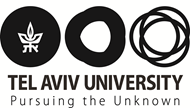-
Using F2 for creating the C-F bond
-
C-H activation of “impossible sites” by fluorine via “front side attack” through 2-electrons-3-centered non-classical carbonium ions.
-
Quite a few reagents based on F2 were developed. Among them acetyl hypofluorite (AcOF) which gave a huge boost to the positron emitting tomography (PET), bromine trifluoride, bromine and iodine monofluorides, each with its unique chemistry, and more.
-
After attempts spanning for decades, the synthesis of methyl hypofluorite (MeOF)was finally achieved. This is the smallest organic molecule unknown before. It is also the only source of the methoxylium species (MeO+) opening new synthetic possibilities. For example MeOF is an excellent source for the isotopic 11CH3O moiety so important for using with PET.
-
The synthesis of the HOF•CH3CN complex, made readily from F2, water and acetonitrile, opened a new era in organic chemistry in the field of oxygen transfer. Among other novel transformations it enabled synthesis of epoxides, which could not be made before, R3NO derivatives, which theoretically were considered impossible to make or other which chemistry giants such as Woodward and Corey tried to prepare, but in vain (e.g. 1,10-phenanthroline-N,N-dioxide).
-
The HOF•CH3CN complex was also used to make for the first time [All]-S,S-dioxooligothiophenes. Today oligothiophenes constitute of the single most widely research subject in organic chemistry enjoying a wide interest through out the electronic industry based on organic materials. Already in the 1980’s there was a prediction that using [All]-S,S-dioxooligothiophenes will constitute a better group of semiconductors, but despite all attempts the goal was impossible to achieve. The HOF•CH3CN complex changed this situation and we have synthesized a whole series of such S,S-dioxooligothiophenes.
-
Any time where the introduction of the [18]O isotope is desired the best way to achieve it is to use the primary source of this isotope – the H2[18]O since the HOF•CH3CN oxygen originates in water. Lately we developed an easy mode of forming almost any R(Ar)-[18]OH alcohols. Such labeling is frequently very desirable in tracking the fate of a drug throughout the body.
Prof. Shlomo Rozen

Research
Education
-
PhD Organic Chemistry, Hebrew University, Jerusalem, 1973
-
Post doctorate under Professor Sir Derek Barton (Nobel laureate), RIMAC (as part of MIT Cambridge MA, USA), 1973-1976
Academic Appointments
-
Lecturer, Tel Aviv University, Israel, 1976-1980
-
Senior Lecturer, Tel Aviv University, Israel, 1980-1985
-
Associate Professor, Tel Aviv University, Israel, 1985-1989
-
Full Professor, Tel Aviv University, Israel, 1989
-
multiple time Visiting Scientist, E. I. DuPont de Nemours - CR&D, 1981-1996
-
Chairman of the School of Chemistry, Tel Aviv University, Israel, 1997-2001
-
Chairman of Teva Institute for Organic Chemistry, School of Chemistry Tel Aviv University, 2005-2013
Awards and Prizes
Grants:
-
For more than 30 years uninterrupted grants from ISF and BSF. Also many grants from other sources
Prizes:
-
"TEVA FOUNDERS" Award, 1994
-
Incumbent of the Josef Kryss Chair in Organic Chemistry, 1999
-
The American Chemical Society Award, 2005
-
The Israel Chemical Society Award, 2005
-
Kolthof Award, Administrated by the Technion, Israel, 2008

